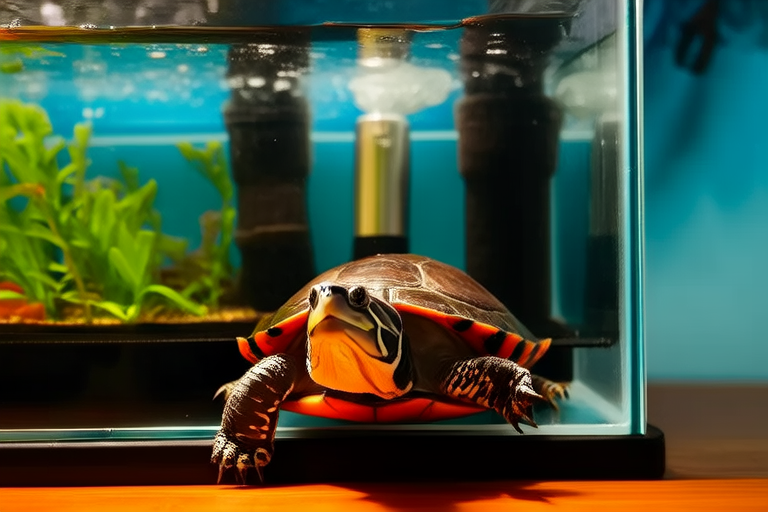Caring for Red-Eared Sliders: A Comprehensive Guide
Red-eared sliders (Trachemys scripta elegans) are one of the most popular pet turtles worldwide due to their engaging personalities and relatively low maintenance. However, owning these reptiles requires commitment and proper understanding of their specific needs. This guide aims to provide you with all the necessary information to ensure your red-eared slider leads a healthy, happy life.
Habitat Setup
Tank Size
The first consideration when setting up a habitat for your red-eared slider is tank size. As sliders grow rapidly, especially during their first few years, it’s crucial to have a spacious environment that can accommodate them as they mature. For hatchlings, a 20-gallon tank is adequate; however, adult sliders need at least 40 gallons per turtle. Always opt for larger tanks to prevent overcrowding and stress.
Filtration
Proper filtration is vital in maintaining water quality within the enclosure. Choose a powerful filter that can handle twice the volume of water in your tank. Regular cleaning and maintenance of the filter are also necessary to keep the water clean and free from harmful bacteria.
Lighting
Red-eared sliders require UVB lighting to synthesize vitamin D3, which aids calcium absorption for strong shell and bone development. Install a full-spectrum UVB bulb above the basking area, ensuring it covers about 75% of the tank’s surface. Replace bulbs every six months or as recommended by the manufacturer.
Temperature
Maintaining an optimal temperature gradient is key to your turtle’s health. Use submersible heaters to keep water temperatures between 75-80°F (24-27°C). The basking spot should reach approximately 90-95°F (32-35°C). Invest in a reliable thermometer to monitor these temperatures accurately.
Diet Specifics
A balanced diet ensures your red-eared slider remains healthy throughout its lifespan. Offer a variety of foods including commercial pellets designed specifically for aquatic turtles, fresh vegetables like romaine lettuce, and occasional treats such as earthworms or feeder fish. Feed young sliders daily while adults may eat every other day. Avoid overfeeding, as this can lead to obesity and related health issues.
Health Care Tips
Regular check-ups with a veterinarian experienced in reptile care are highly recommended. Keep an eye out for signs of illness such as lethargy, loss of appetite, swollen eyes, or discharge from the nose or mouth. Early detection and treatment of ailments significantly improve recovery chances.
Shedding Information
Alligator skin-like shedding occurs periodically, particularly noticeable around the head and legs. Encourage natural shedding by providing rough surfaces like rocks or driftwood for rubbing. If you notice any retained patches, consult your vet who might suggest soaking in warm water or gentle assistance.
Common Mistakes to Avoid
- Overcrowding: Too many turtles in one tank can cause competition for space and resources leading to stress and aggression.
- Inadequate Filtration: Poor filtration results in dirty water, promoting bacterial growth and respiratory infections.
- Lack of Basking Area: Without a dry area to bask under UVB light, your turtle cannot properly absorb vitamins, potentially causing metabolic bone disease.
- Improper Feeding Habits: Overfeeding or feeding inappropriate food items can lead to nutritional imbalances and obesity.
Seasoned Owner Advice
Experienced turtle owners emphasize the importance of patience and consistency in caring for these animals. They advise new owners to join local or online communities where they can share experiences and learn from others’ successes and failures. Additionally, keeping detailed records of feeding schedules, health checks, and any changes in behavior helps track your pet’s wellbeing effectively.

This comprehensive guide provides a solid foundation for taking care of red-eared sliders. By following these guidelines, you’ll be able to provide your pet with everything needed for a long, prosperous life. Remember, each turtle has unique requirements, so always tailor care according to individual needs.
